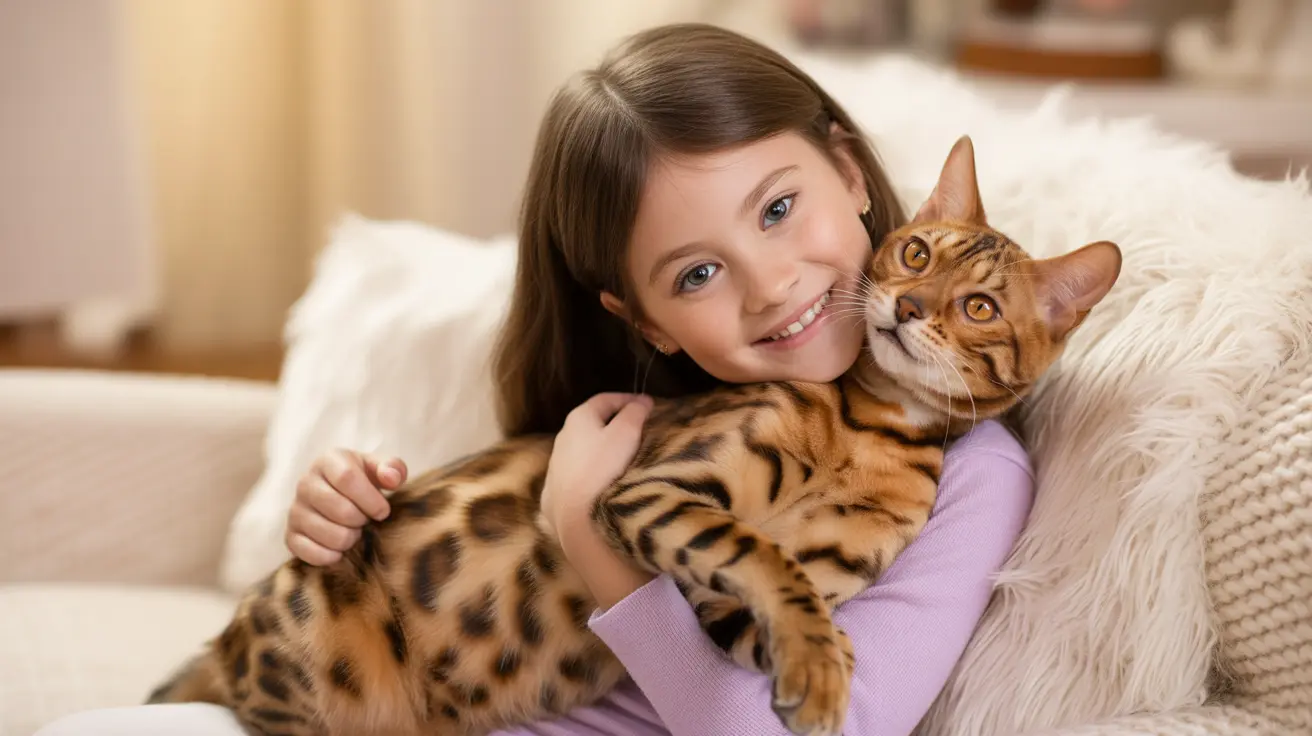Understanding Cats' Emotional Capacity
Research shows that cats possess emotional intelligence similar to that of a 2.5-year-old child. They experience six primary emotions: happiness, sadness, fear, disgust, surprise, and anger. This emotional capacity directly influences how they interact with children and helps explain their sometimes childlike behaviors.
Cats have maintained much of their genetic makeup throughout domestication, with only about 13 genes showing significant changes related to behavior. This preservation of their natural instincts plays a crucial role in how they respond to children's presence and actions.
How Cats Typically React to Children
Cats generally exhibit varying responses to children, depending on several factors:
Initial Reactions
- Careful observation from a distance
- Slow approach and investigation
- Potential retreat if feeling overwhelmed
Positive Signs
- Gentle rubbing against children
- Purring during interactions
- Relaxed body language
- Willingness to stay in the same room
Warning Signs
- Tail twitching
- Ears flattened
- Growling or hissing
- Quick departure from the area
Creating Positive Interactions
Successfully integrating cats and children requires careful planning and supervision:
For Young Children (0-5 years)
- Always supervise interactions
- Teach gentle touching
- Prevent chase games
- Respect the cat's space
For Older Children (6+ years)
- Explain cat body language
- Demonstrate proper handling
- Assign age-appropriate pet care tasks
- Encourage calm interactions
Building Safe Relationships
The key to fostering positive relationships between cats and children lies in understanding and respecting boundaries. Cats need to feel safe and in control of their interactions, while children must learn to approach cats with gentleness and patience.
Frequently Asked Questions
Do cats generally like being around children, and how can I tell if my cat is comfortable with my kids?
Cats' comfort levels around children vary individually. Signs of comfort include purring, relaxed body language, and willing proximity to children. Discomfort signs include tail twitching, hiding, or hissing.
What are the best ways to introduce young children to a cat to ensure a positive relationship?
Start with supervised, short interactions in a quiet environment. Have children sit quietly and let the cat approach them. Reward calm behavior from both the cat and child with praise and treats.
How can I teach my child to handle and play with a cat gently to prevent scratching or biting?
Demonstrate proper petting techniques, focusing on the head and cheeks. Teach children to recognize signs of overstimulation and to use appropriate toys instead of hands for play.
Why does my cat sometimes hide or hiss when my children are nearby, and how should I respond?
This behavior usually indicates fear or overstimulation. Respect the cat's need for space, create safe retreat areas, and work on gradual, positive interactions when the cat shows interest.
What age is appropriate for children to interact freely with cats, and what supervision is necessary?
Children over 6 years old can typically interact more independently with cats, but supervision is recommended until consistent gentle behavior is established. Younger children should always be supervised during interactions.
Conclusion
While cats can form wonderful bonds with children, success depends on proper introduction, consistent supervision, and respect for boundaries. By understanding feline behavior and teaching children appropriate interaction skills, families can create lasting, positive relationships between their cats and kids.






